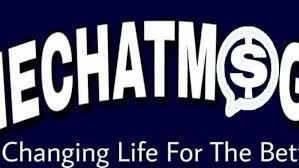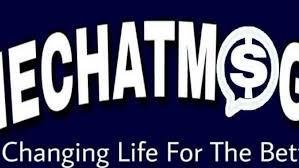Starting a blog is an exciting journey, but choosing the right platform for new bloggers can be overwhelming. With so many options available, it's essential to pick one that aligns with your goals, technical skills, and budget. Whether you’re blogging for passion, business, or monetization, selecting the right platform will determine your blogging success.
In this article, we’ll explore the best blogging platforms for beginners, their features, and how to get started. Choosing the right platform for new bloggers is crucial for success.
Why Choosing the Right Blogging Platform Matters
A blogging platform is the foundation of your blog. It impacts your blog’s design, functionality, SEO, monetization opportunities, and user experience. A good platform should be easy to use, customizable, and scalable as your blog grows.
Best Blogging Platforms for Beginners
1. WordPress.org (Self-Hosted WordPress)
Best for: Bloggers who want full control, scalability, and monetization options.
Pros:
-
Full customization with thousands of themes and plugins.
-
Best for SEO and long-term growth.
-
Ideal for making money through ads, sponsorships, and affiliate marketing.
Cons:
-
Requires web hosting and domain name.
-
Slight learning curve for beginners.
2. WordPress.com
Best for: Hobby bloggers who want a simple platform without managing hosting.
Pros:
-
No need to buy hosting separately.
-
Easy to set up and use.
-
Free and paid plans available.
Cons:
-
Limited customization.
-
Free version includes WordPress branding and ads.
3. Blogger
Best for: Beginners who want a completely free platform with Google integration.
Pros:
-
Simple and beginner-friendly.
-
Free hosting with a Blogger subdomain.
-
Owned by Google, making it secure.
Cons:
-
Limited customization.
-
Less control over design and monetization.
4. Medium
Best for: Writers who want to focus on content without worrying about design.
Pros:
-
Clean and professional layout.
-
Built-in audience and distribution.
-
No need for hosting or design setup.
Cons:
-
Limited control over branding and customization.
-
No direct monetization options for ads.
5. Wix
Best for: Beginners who want a drag-and-drop website builder with blogging features.
Pros:
-
Easy to use with customizable templates.
-
No coding required.
-
Includes hosting and security.
Cons:
-
Free version has Wix branding and ads.
-
Less flexibility compared to WordPress.
6. Squarespace
Best for: Creative professionals and small business owners.
Pros:
-
Stunning design templates.
-
All-in-one platform with hosting included.
-
Good for portfolios, photography, and business blogs.
Cons:
-
No free plan.
-
Limited customization compared to WordPress.
How to Choose the Best Blogging Platform for You
Before selecting a platform, consider the following factors:
1. Your Blogging Goals
-
Are you blogging for fun or to make money?
-
Do you plan to grow your blog into a business?
-
Will you need advanced features like e-commerce or memberships?
2. Ease of Use
-
If you're a beginner, choose a platform with an intuitive interface and minimal setup.
3. Customization and Flexibility
-
Do you want full control over design, SEO, and monetization? Platforms like WordPress.org offer unlimited customization.
4. Monetization Options
-
If you want to make money from your blog, ensure the platform supports ads, affiliate marketing, or digital products.
5. Budget Considerations
-
Free platforms like Blogger and Medium are great for beginners, but for professional blogging, investing in hosting (WordPress.org) or a paid plan (Squarespace, Wix) is worth considering.
How to Get Started with Your Blog
Step 1: Choose Your Platform
Select the best platform for new bloggers based on your needs.
Step 2: Pick a Domain Name and Hosting
-
If you choose WordPress.org, purchase a domain name and hosting from providers like Bluehost or SiteGround.
-
Wix, Squarespace, and WordPress.com include hosting in their plans.
Step 3: Design Your Blog
-
Use pre-made templates or customize your theme.
-
Make sure your blog is mobile-friendly and easy to navigate.
Step 4: Write Your First Blog Post
-
Focus on valuable, engaging, and SEO-friendly content.
-
Include high-quality images and optimize your posts for readability.
Step 5: Promote Your Blog
-
Share your posts on social media, Pinterest, and email newsletters.
-
Join blogging communities to increase visibility and traffic.
Step 6: Monetize Your Blog (Optional)
-
Sign up for Google AdSense or affiliate programs.
-
Offer sponsored content, online courses, or e-books.
Conclusion
Whether you prioritize ease of use, customization, or monetization, there’s a blogging platform to fit your needs. If you want full control and long-term growth, WordPress.org is the best choice. If you prefer a simpler setup, Blogger, Medium, or Wix might be ideal.
Start your blogging journey today and create content that inspires, informs, and engages your audience!



